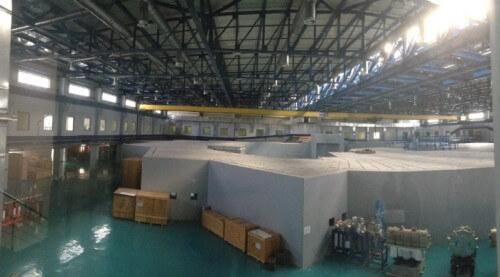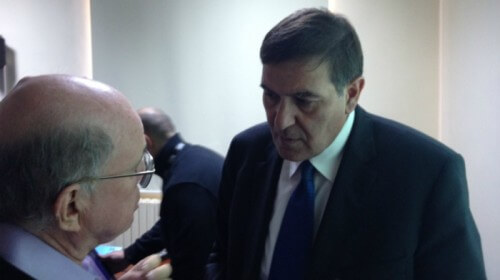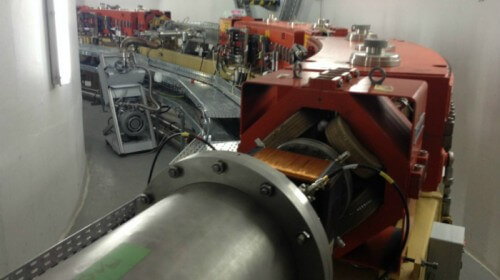While the world is discussing the nuclear issue with Iran, a parallel universe exists for it. A universe where Israeli, Palestinian, Iranian, Turkish, Jordanian and Egyptian scientists collaborate in establishing a research facility that will be used by the countries of the region to study water, environmental and other scientific issues

At a time when Israel is fighting furiously against the nuclear agreement that is taking shape with Iran, and the international community is making eights in the air just to keep the Palestinians and Israelis around the same table, and at a time when the entire Middle East is boiling and bubbling, an hour's drive from Jerusalem, a parallel universe exists. A universe where Israeli, Palestinian, Iranian, Turkish, Jordanian and Egyptian scientists collaborate in establishing a research facility that will be used by the countries of the region to study water problems, the environment and other scientific issues. This vision - which seems almost imaginary - is now set up and running in Alan, Jordan, about half an hour's drive from the Allenby Bridge, under the name SESAME - English acronym for Synchrotron for Experimental and Applied Science in the Middle East. "Despite the technical, scientific and political challenges, the SESAME project was a reality, and we are in the advanced stages of building the machine, says the project manager, Dr. Khaled Toukan, head of Jordan's Atomic Energy Commission, in a rare interview with the Israeli media. "The project took off despite the political winds that blew in the last decade in the Middle East, and passed the point of no return."

The idea for a joint peace project in the Middle East was born 18 years ago, shortly after the assassination of Rabin. In the late 90s, it was decided that the project would be a synchrotron, based on a German facility that was dismantled at the time, and Germany agreed to donate it. The project progressed with thumbs up, with the bulk of the funding coming from Jordan, Israel, Turkey and Iran, at least until the sanctions prevented it from transferring its share. Another partner in the project is the Palestinian Authority, Egypt, Cyprus, Bahrain, and even Pakistan. "I think this is a project where the scientists in all the countries involved have pushed their governments above and beyond what those governments expected to be. This is an example of how something like this can happen," says the head of the Israeli delegation at SESAME, Prof. Eliezer Rabinovitch from the Hebrew University, who chairs the National Committee for High Energies. "The road is still long in the future as well, but many people with good will in all countries made it possible for us to get there."
High level science

A synchrotron is actually a particle accelerator, but unlike accelerators that cause collisions of particles, it utilizes the enormous energy of the electrons moving in it to create a strong radiation source, which has many applications in scientific research, such as determining the structure of biological materials, characterizing chemical reactions and energetic processes, studying materials And even an examination of archaeological findings and paint layers of works of art. Israeli scientists who wish to use such a facility today have to fly to France or Germany. These days, the electron acceleration unit is supposed to start operating, in preparation for the installation of the central track where the electrons will be accelerated. The facility should be fully operational in 2015. "I can see SESAME as a world-class facility, where scientists from all the countries of the region collaborate to advance science and knowledge, and solve problems in the fields of water, the environment, and medicine. I am optimistic", Toukan concludes. "My dream is that there will be young people here who will do good science and in the process learn about each other", says Rabinovitch. "High-level science that will reach recognition, and a human connection that will have long-term consequences."
Money talks
In addition to the political difficulties, SESAME people have been struggling all these years with a lack of pocket money. So far, about 47 million dollars have been invested in the project, and about 20 million are still missing to ensure its opening on time. Jordan, which, in addition to its participation in the general financing, also provides the space and electricity, puts a hand in its pocket from time to time to help, and just in the last few days King Abdullah announced a donation of a supercomputer at a cost of about ten million dollars. Last week we visited there with a delegation of science reporters from around the world who were invited to Israel, and were also brought to see the joint project, in the hope that the coverage will bring the European countries to participate in the financing. The SESAME scientists hope that they will do world-class research there, and we asked him if the project does not deserve a Nobel Peace Prize. "I cannot judge, but I can say that it is a challenging project. In every way. Everyone involved in the project should be proud of the achievement, and history will remember SESAME as one of the bright sides of science in the Middle East and in this part of the world," Toukan replies.
Even when it is close to completion, the idea of a joint research facility for the countries of the Middle East still looks like a mirage that managed to create skin and tendons in an unnatural environment, and not like a swallow heralding the real spring - not the Arab Spring. But if despite everything he managed to survive, one can hope that maybe one day, this swallow will become a dove that will bring peace to the region, if not on an olive leaf, at least on an electron beam.

2 תגובות
It is encouraging to know that there is a part of Islam that connects to the parts of Muhammad that talk about the "people of the book" and not about the "jihad". The peoples of the region depend on each other and their well-being will come from joint creation. Otherwise they will be roasted next to each other.
If the Middle East, it would be richer and more scientific. Israel would be less threatened. And the credit rating of the region would also be high. And so would Israel's.